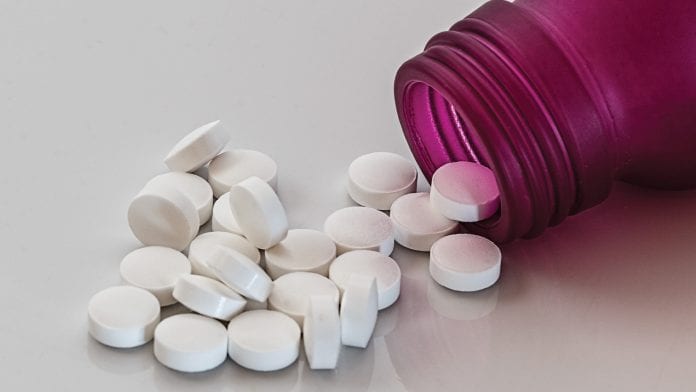
Dr Polina Dombure, the managing director of Inpharmatis, introduces Prudenta, an innovative pharmacovigilance solution set to transform local literature monitoring.
The costly, time-consuming and error-prone process of local literature monitoring in pharmacovigilance could soon come to an end thanks to Prudenta, an AI-powered solution from Latvian company Inpharmatis that makes searching for adverse drug reactions possible electronically. Managing director Dr Polina Dombure explains more in conversation with Health Europa.
Hurdles in pharmacovigilance legislation
In 2012, pharmacovigilance legislation introduced by the European Commission came into effect which, among other things, commits marketing authorisation holders to perform a weekly literature search in order to identify suspected adverse reactions to medicines.
Non-compliance with this legislation could lead to penalties of up to 10% of the annual turnover of the holding.
Besides the obvious importance of the patients’ safety and a potential fine, mistakes in pharmacovigilance can be very expensive. If even one mismanaged adverse reaction reaches the media, it has the potential to irrevocably damage a company’s reputation if they don’t respond appropriately – understandably, then, nobody wants to take any risks.
Pharmaceutical companies have thus set themselves key targets to ensure that no mistakes are made or adverse reactions missed. First, they aim to make absolutely sure that all pharmacovigilance processes are done in a quality manner – something which, according to Dombure, is certainly evident in good-quality companies.
Second, they aim to centralise as much as possible the decision-making process in pharmacovigilance. “By centralise,” expounds Dombure, “I mean that companies want to be sure that any signals – no matter where they come from – are recorded and analysed by qualified personnel and in such a way that any decisions regarding classification of the signal or how to follow up an adverse event etc. are made in an informed manner and based on high-quality, accurate knowledge.”
The local literature challenge
When it comes to literature searching, this presents a problem. Dombure explains that pharmacovigilance-related literature is today classified into two main categories:
- International literature – i.e. high-quality, peer-reviewed, indexed medical and scientific literature that is available in such databases as MEDLINE, PubMed and Embase – and
- Local literature – i.e. non-indexed medical and scientific literature published, for example, by associations of local specialists or a commercial publisher addressing local community needs.
“Given the nature of local journals, they are usually printed for a small audience, cover a comparatively small geographic location, and are printed in the native language,” Dombure adds. “Depending on the size of the country and the number of specialists, there may be more or less medical journals in a local literature, and not all of them will be available online.
“Global companies may have representative offices in each of the countries where their drugs are marketed, but the same isn’t always true for smaller companies. The question then becomes: how do each of these companies perform local literature searches?”
From manual to electronic
Today, pharmaceutical companies have two options, both of which are manual-based. Local journals are either received by email in a downloadable, printable PDF format or – commonly – they are received by post in a paper format. Company employees can then perform the literature search, or the task can be outsourced to a consultancy or third-party service provider.
This is where Inpharmatis comes in. The Riga-based firm performs weekly local literature monitoring for a number of clients in Europe and the Commonwealth of Independent States (CIS).
“Every week my colleagues in the Baltic offices take the list of active substances and products supplied to us by our clients and they go through local journals with a ruler to find any mention of them. It’s quite monotonous work for someone with a higher degree in pharmaceuticals or medicine, and there is every possibility that a mistake will be made. But it has to be done; there is no way around it.”
While journals received in PDF format do come with a computer search function, Dombure explains that companies cannot be 100% sure that the search function is entirely accurate. “If you want to do a quality job, you really need to read each article in each journal line by line,” she says.
This cumbersome manual process carries an enormous cost in terms of staff salaries and is not without risk of human error – which itself comes with a significant price tag. What’s more, by law, pharmaceutical companies must carry out regular auditing to ensure that any third-party service providers they employ are working according to standard operating procedures (SOPs) and have received the requisite training – another cost and administrative burden.
“In early January 2017, I received a report from my colleagues, which I needed to sign off to send back to the client, and I was thinking what a nuisance it was, to be in the 21st Century and still wasting our time with rulers looking through journals,” Dombure tells HEQ.
“This is when I got the idea to create a software that could perform the local literature search for us.”
First, she looked on Google to make sure something like that wasn’t already available; it seemed impossible that the companies behind Embase or MEDLINE wouldn’t have created such a tool.
“I began making enquiries and discovered that, historically, those companies were publishers and weren’t in the business of pharmacovigilance – so they just weren’t interested.
“Databases such as Embase do provide some search tools, but they’re only for indexed journals. For them, picking up on local journals as well would represent a huge workload and isn’t necessarily their area.”
From there, Dombure began speaking to software developers, capitalising on Inpharmatis’ experience selling software tools for companies such as EXTEDO and Dot Compliance. “We understand what our clients want when they’re purchasing software, but at the same time we also understand what professionals in the pharmacovigilance industry want and what pharmacovigilance legislation demands,” she says.
The Prudenta advantage
The result of these discussions was Prudenta, a one-stop solution for monitoring adverse drug reactions in local literature. Prudenta combines artificial intelligence, validated workflow processes and additional quality control checks to make local literature monitoring an entirely electronic and hassle-free operation.
The software’s unique features include:
- An option to search for specific medical terms, drug names and active pharmaceutical ingredients in a chosen country, journal and time frame
- The ability to search through only the relevant parts of multilingual texts and exclude unnecessary terms such as this/that/the etc. and
- An AI component which will make the software smart enough that it will, in time, learn and intuitively understand active substances and adverse drug reactions. This will enable it to signpost to the user any serious events such as death or disability or irregularities showing inconsistence in patterns.
“The smartness of the software lies in the database underneath it that connects active substances to adverse events. In time, we believe that will become Prudenta’s biggest advantage,” Dombure explains.
In addition to local journals, Prudenta can be used to search social media and webpages, something that is coming to be another requirement of pharmaceutical companies.
The user interface is straightforward and easy-to-use. Users simply enter a keyword(s) such as aspirin, and the system is then able to provide search results on a weekly basis for local literature in each country that that aspirin is marketed in. Where necessary, at one click of a button, users can request a translated version of any article that contains a positive search result. Alternatively, they can opt to receive translated articles by default in their search settings.
Local publishers have been largely enthusiastic about the idea, with the majority if not all of those Inpharmatis has spoken to recognising the value of digitising their journals.
“A lot of local publishers don’t even have an archiving system, which means that previous editions of their journals very often aren’t available online,” says Dombure. “We’ve actually been able to help these journals to become more electronic, to welcome them into the 21st Century, so to speak.”
She adds: “Behind the scenes we’re making use of several quality control tools and interesting mechanisms such as the Amazon Mechanical Turk to ensure that the system works as it should.”
In addition to eliminating the risk of human error, Prudenta will also automate and centralise the local literature search process to the company. Automation will free up company resources, especially those in the pharmacovigilance departments, for analysing cases and other important tasks, instead of literature search training or auditing.
Centralisation will meanwhile ensure that information can be delivered to decision makers first hand and without delay so that they can make quicker, more informed decisions.
Combined, these benefits should serve not only to make drugs safer but also to make them cheaper and thus more accessible to the patients who need them.
The journey to commercialisation
Prudenta has largely been financed by Inpharmatis itself, but, in 2018, the project successfully won Phase I funding from the European Commission’s SME Instrument, an initiative of the European Innovation Council (EIC) pilot that aims to accelerate company growth and support market-creating innovation. Phase I of the instrument is expected to result in a business plan and feasibility study, but a prototype of Prudenta has already been developed and a working version is due for launch early next year.
Dombure credits this quick turnaround to her team at Inpharmatis and the initial excitement over the software, which inspired a lot of late nights and hard work early on. “I could not have done it without my team and the people who believed in me; over the year they really have been so supportive in driving the idea, driving the marketing initiatives, talking to clients and to publishers, and getting this idea off the ground.”
At the same time, Dombure says, the pharmacovigilance industry is so dynamic that she knew she had to move quickly if she didn’t want to be left behind. “That’s why our goal is to start commercialisation in November. That will be the biggest cost, but we believe that the product is so good that once it’s on the market, things will be relatively straightforward.”
Indeed, Inpharmatis has already caught the attention of a number of clients who are interested in trialling the software, and the company now plans to cover 36 EEA countries in the initial rollout phase – an ambitious challenge but one which Dombure is confident they can achieve.
Inpharmatis is also on the lookout for potential investors to help take Prudenta global, and hopes to one day be able to collaborate with Embase or PubMed in order to search even indexed journals.
Inpharmatis to date
The company’s ambitious plans are in keeping with its impressive growth from a small home-based consulting business to a team of 78 people operating across Europe and the CIS. Today, Inpharmatis is able to offer comprehensive regulatory affairs, pharmacovigilance, medical writing, GMP and GxP auditing services to the pharmaceutical, medical device, food supplements, cosmetic and biotech industries.
“We have experienced significant growth in the last three years and we have expanded our client base dramatically, for several reasons,” Dombure says. “First of all, we decided to work more with the CIS, so now we have offices in Moscow, Russia, in Kiev, Ukraine, in Tashkent, Uzbekistan, and in Tbilisi, Georgia.
“The region is developing very dynamically, but at the moment there are no service providers covering it to the same high-quality standard as those operating in the EU and internationally. It’s important that pharmaceutical companies – especially global ones – know that they are dealing with transparent organisations with SOPs, ISO certification, and training programmes in place. Now, we can offer that.
“All of our staff speak English and Russian as a mandatory requirement, and 85% have master’s degrees in medicine or pharmacy. We strongly encourage them to continue to do scientific work, to publish and to speak at events. We put a big emphasis on training in the company because we want to be sure that our personnel have the appropriate level of expertise, and we actually have a department dedicated to developing training programme curriculums for our clients in the CIS and in the Baltics, as well.
“We are also very electronic; we utilise a lot of electronic systems internally to make sure that our processes are automated, and we’re always striving for better quality, better results, and better efficiency for our clients.”
Four years ago, Inpharmatis unveiled a new department called E-solutions, inspired by its regional partnership with EXTEDO, for whom it acts as an authorised representative. E-solutions has since grown and today represents a number of software solutions and vendors.
“Our relationship with EXTEDO gave us the extra push we needed to begin talking about software to not only pharmaceutical companies but also health authorities and the government sector,” Dombure says, “which has given us a really good understanding of what’s happening in drug registration, pharmacovigilance and other processes from the government’s perspective.”
These experiences have combined to make Inpharmatis the experts in pharmacovigilance in the CIS region, boasting the coverage, the languages, and the political understanding needed to set it apart from its competitors – a reputation which will no doubt continue to grow when Prudenta enters the market.
Dr Polina Dombure
Managing Director
Inpharmatis SIA
+ 371 6721 0500
polina.dombure@inpharmatis.com
www.inpharmatis.com
This article will appear in issue 7 of Health Europa Quarterly, which will be published in November 2018.

























